One of the greatest 3-gun events in the US is the Crimson Trace Midnight 3-Gun Invitational. The competition is held in the dead of night inbeautifulBend, Oregon, and there’s always tons o’ fun stuff to shoot, great stages, interesting products to check out and outstanding food. The catch is that it isn’t open to the public; you need to either be an awesome shooter or an outstanding writer to get tapped for an invite. Lucky for me, for the second year in a row I was asked to join in on the fun. And this year, I was determined to actually make it to the prize table . . .
Last year, I didn’t do so well. I got lost in the middle of a stage and DQ’ed myself when I broke the 180 line. It was embarrassing and not something I wanted to repeat. So this year, I was determined to go slow and stay in the competition to the very end.
In terms of gear selection, I didn’t change things much. The only real difference between last year’s shoot and this year was that I was using a Crimson Trace flashlight on my shotgun instead of the Surefire light I was using previously. In retrospect, that was a mistake, but I didn’t know it when I started the night.
As the sun slowly set over the high desert outside Bend, I was already exhausted. I hadn’t gotten nearly enough sleep, I was still operating on San Antonio time (2 hours ahead), and I had just eaten a massive dinner. In short, I was ready for a nap. Instead, I had five stages worth of 3-gun fun that I needed to get through. Our squad started out on stage 3, “Touch ‘Em All,” the one stage that I was looking forward to the least.
The stage is designed like a baseball diamond, with the shooter needing to run to each base before they are finished. You start with a rifle at home plate, shooting eight paper targets and two steel targets two times each before ditching it and moving on. From there, you can finish the entire course using a handgun or you can shoot the steel targets with a shotgun. The last station, at the far end, had four more paper targets and two steel targets that needed two handgun rounds each.
My plan was to shoot the stage in a zig-zag formation, moving from home plate to third base, then over to first, and finally second. There are two reasons for this: safety and speed.
From the starting position, my next move would be to third base off to my left. That meant that when I started running, I could drop the rifle into the dump box with my right hand and make sure that the safety was engaged while still pointing the gun downrange. It’s probably a half a second difference doing it that way as opposed to moving to the right, but every second counts.
Some shooters decided to run the steel plates with a handgun, but that wasn’t an option for me. Handgun shooting is my weakest area, and I knew that I was going to end up wasting time trying to get my hits when I could just use a shotgun instead. A shotgun is slower to reload than a handgun, but the shot pattern and the more solid shooting stance you get makes it much more accurate. Since the stage didn’t require me to reload the shotgun, there were no downsides.
Moving from left to right also kept me safe with the shotgun. It meant that I could hold the gun across my body and flat-out run, keeping the muzzle downrange. Moving the other way would have opened me up to breaking the 180 if I wasn’t careful.
Overall, the run was okay. I missed a couple times with the rifle, and I didn’t run as quickly as I would have liked to. But there were more stages to run, and I figured I could pick up the time down the road.
Stage 4 was called “barrel racing,” and the reason was that you were required to dump your gun in one bucket and then race to the other one for your rifle to complete the stage. It was a particularly evil design, as the faster you ran to the rifle the less accurate you would be (from the elevated heart rate and heavier breathing). Like a Chinese finger trap of stage designs. I liked it.
The stage was very straightforward, and so I shot it as I saw it. As the targets appeared, I took them out. The only real challenge was that there were one or two clay pigeons that were “hiding” behind barrels, so you needed to remember where they were to shoot them. It’s hard enough to remember when the sun is shining, but in the middle of the night it’s even more difficult.
There was one option on this stage that I didn’t take, and that’s using a handgun. I could have staged a handgun at one of the dump barrels and shot it while moving to the other, taking out the paper targets in the meantime, but the way in which the steel targets at the end of the course were set up meant that I would be moving back over across the course again anyway. So it made more sense to use a rifle on the paper targets than a handgun, since the rifle was quicker and more accurate. Either way you shot the stage, you’d still have a leg where you were sprinting from one side to the other. Nevertheless, I still missed one of the paper targets. Still not sure exactly how that happened…
Stage 5 was a re-work from the previous year, but that didn’t make it any less fun. Starting with a rifle, you needed to engage a bunch of paper targets and then some clay pigeons with a shotgun. The previous year it was paper targets with a handgun out the back of the house, but clays work too.
The tricky thing on this stage was that one of the clay pigeons was hiding behind a bucket. You needed to shoot it through a hole in the wall before moving to the back door, otherwise it was impossible to hit. A couple shooters forgot that and missed the target, so as I was walking to the line all I was saying to my sleep-deprived brain was “remember the hole.”
One of the big differences between day and night shooting is that you can’t really see very well. I know, a shocking revelation. But in competition shooting, it’s often the case that there’s only one very specific position from which all of the targets can be engaged. And if you miss your mark, so to speak, then you’re left moving about and wasting time to try and line up your shot. I thought I had found my mark on this stage when I was engaging the targets in the two side rooms, but I had missed it completely. And so I was left to bob and weave my way through, getting the proper angle on targets, wasting time the whole way through.
Another fine example of not being able to see very well is at the end of the stage. The targets were all about 20 yards away, but I couldn’t see them very well at all. The flashlight on the shotgun, the Crimson Trace white light, wasn’t doing a very brilliant job of lighting the course up. That inability to see where I was hitting meant that I wasted a good five or six seconds searching for the clay pigeons instead of shooting them. I was tempted to switch to a different flashlight, but I didn’t have a viable spare with me.
Stage six is why you shoot the Crimson Trace match. Wearing night vision NODs, you use a suppressed Glock with an IR laser to shoot three targets, and then dump it. Then you pick up a full auto Mk110 with an IR laser, and blast away at some targets. It was tons of fun to shoot, but doesn’t look good on camera – the whole stage is shot in total darkness.
The “trick” to this stage was that lone target all the way on the far right. The stage was designed in such a way that you were tempted to try and shoot it as you were coming back up range from a set of targets, encouraging you to break the 180 and get sent home. I didn’t fall for that trap, but others did.
Stages like this are challenging not specifically for their design, but because you’re using guns that you’ve never fired before. There’s a big difference between making a shot with your trusted match grade handgun and a Glock that someone trucked out to the range as a stage gun. You don’t know how the recoil will feel, you aren’t given a chance to test the trigger, and you don’t even know if the sights are on target. It’s tons of fun when done properly, but when an entire stage depends on your performance with a gun you’ve never fired it gets a little hairy.
The final stage of the night was stage 7, one of the longest stages on the course. You start by shooting 10 rounds out of a Mk. 46 machine gun (lovingly provided by FNH USA) at two steel targets, but it doesn’t matter if you hit them or not and you aren’t on the clock. SO it’s just for fun. Then you get up and engage a bunch of paper targets and clay pigeons. The challenge with this stage was remembering where all of the targets were, as some were hiding behind barrels or otherwise out of sight.
This stage is where my score absolutely imploded for the night, and it was an equipment issue.
On my Sig Sauer P226, I’m running a set of Crimson Trace lasergrips. They’re great and on target for things 5 to 10 yards away, but in this case the targets were much further out. And because the laser on my gun was located on one side of the barrel, I had a pretty big parallax issue – the laser was pointing to the left of where my bullets were actually hitting. But because I was so exhausted at this point (it was about 3 in the morning) I didn’t think to correct for that issue.
As a result of the parallax issue, I racked up 30 seconds worth of penalties – I missed two targets completely, and didn’t neutralize two more. That dropped me from my usual position (about 58th place) down to 105th on the stage score sheet. It was a sucky way to end the night, but at least the night was over.
Having officially reached the low point of the match, I went back to the hotel room and fell dead asleep the second my head hit the pillow. The match would finish up the next day, and I was determined to be awake and alert enough to see it through. Little did I know that I was about to move from the pit of despair to the pinnacle of my weekend the very next stage.

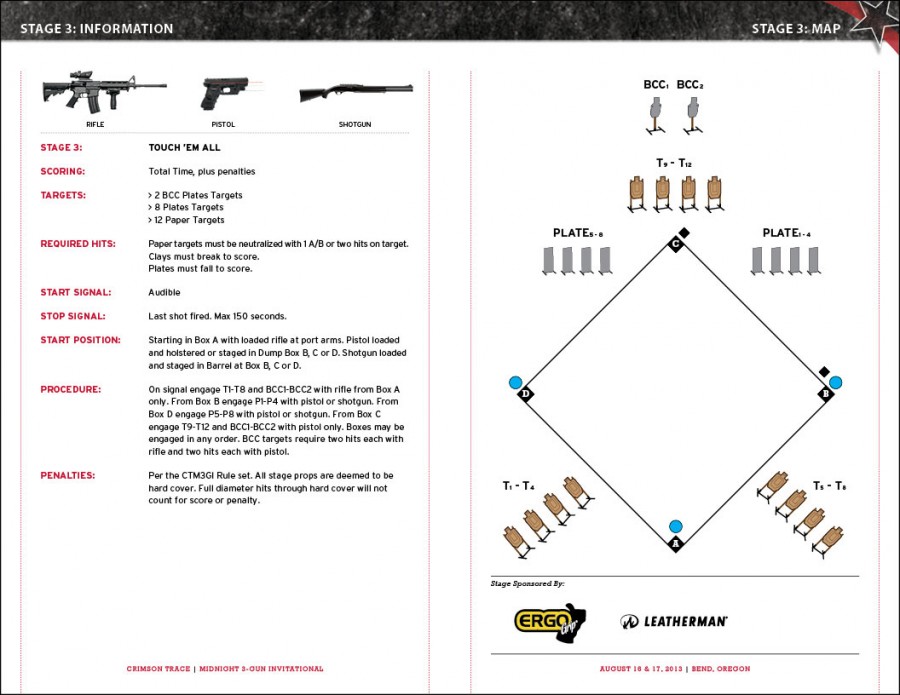
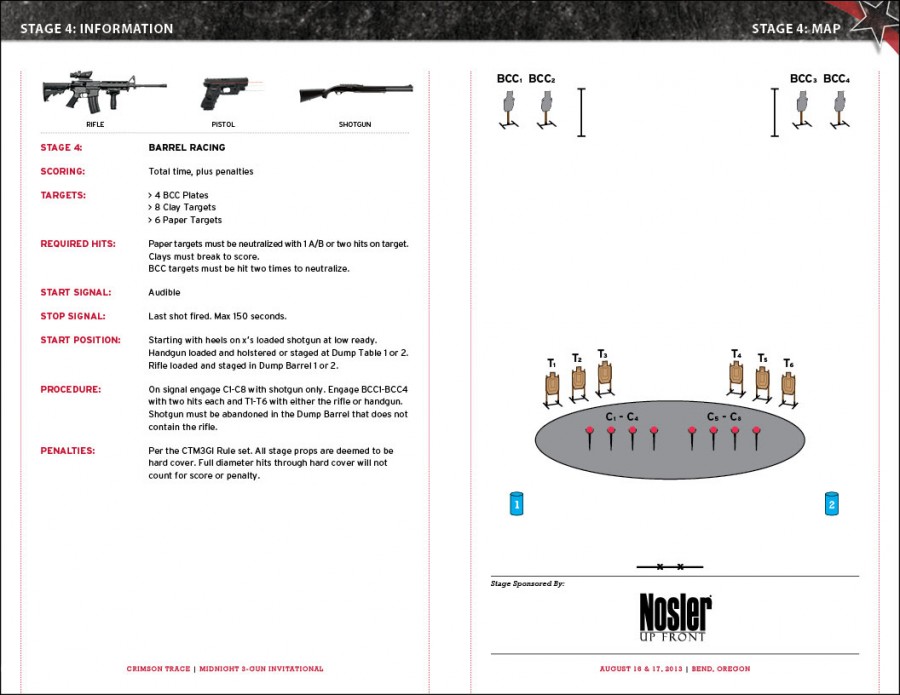
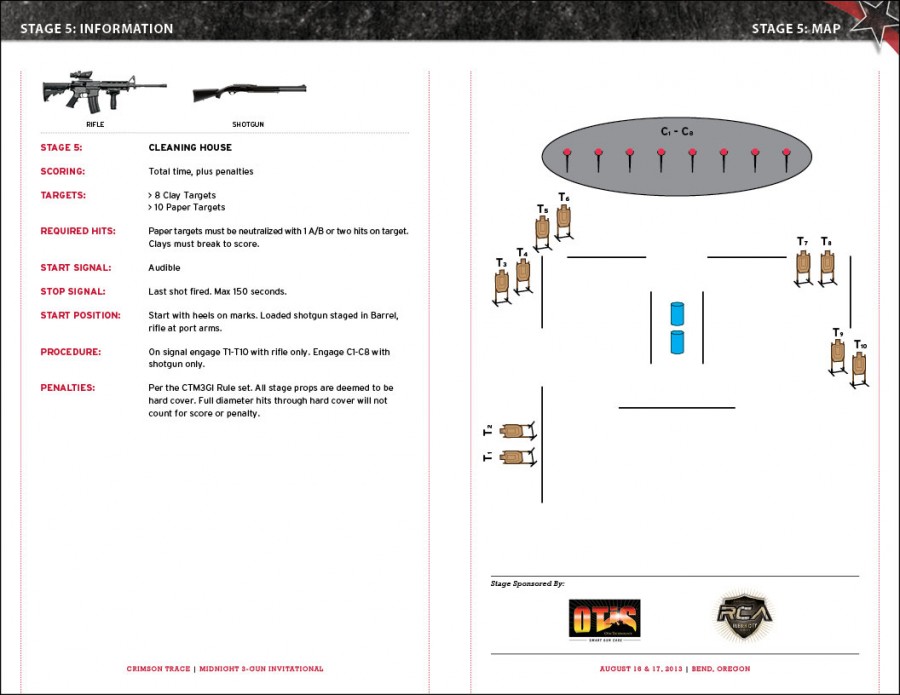
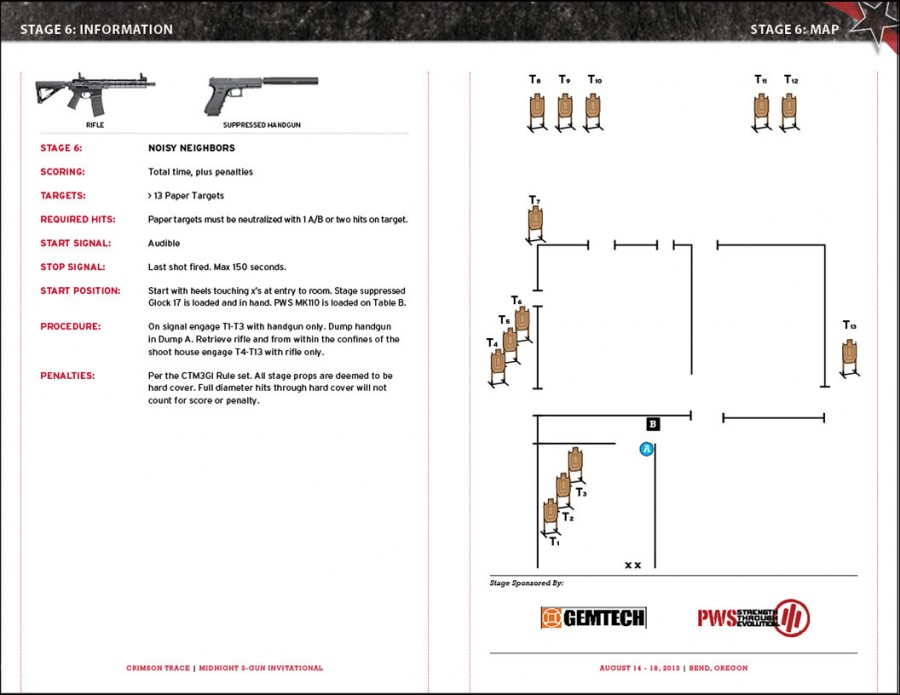
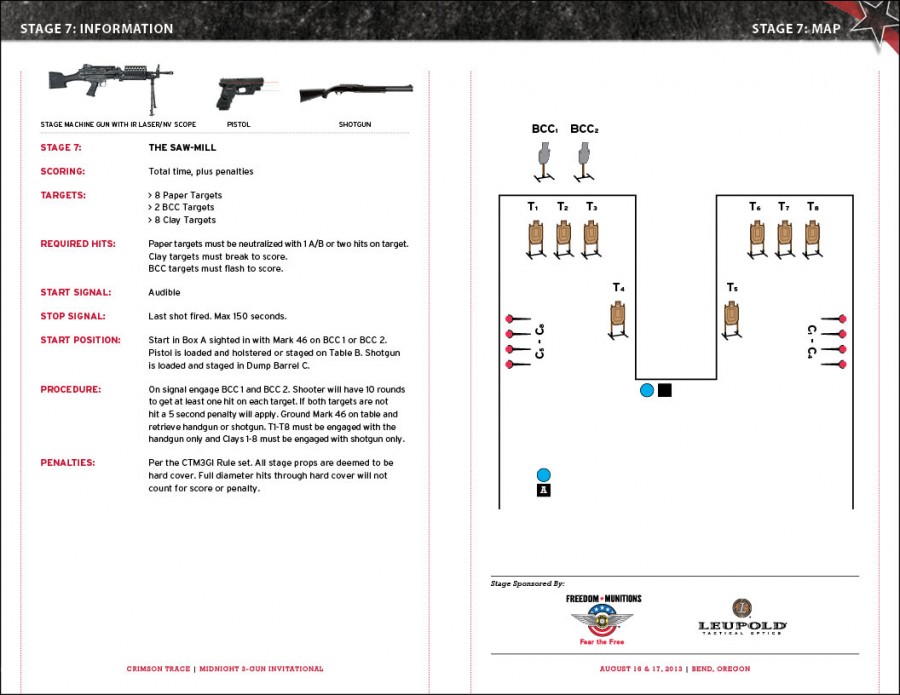



Dang, this three-gun stuff sounds fun.
are you allowed to mount/use lights which produce more of a flood lighting vs a spot?
i assume it is the video but as much fun as it sounds, the video looks extremely dangerous. No way to know what is behind what you are shooting at or some random living thing walking into the line of fire…. but my guess is there is enough ambient light that will keep you from getting turned around or if you do, someone flips a switch to light up the area? And having obviously seen it in daylight, you got some comfort level to trust the little you see with your weapons light.
glad you are enjoying your self, thanks for sharing.
So.. is this Dan’s write up of his shooting? Or Nick’s writeup of his run posted by Dan?
My write-up, looks like Dan just pushed the button too early.
I’m assuming you ran the P226 because you had lasergrips for it?
Yup. They don’t make lasergrips for the FNS handguns yet, and if I wanted to run it I would have to choose either a light or a laser for that forward rail. They’re coming out with a combo unit, but it wasn’t ready in time for the event.
I’m curious, Nick. Why do you have the LG’s set up for point-of-aim? The distance between bore centerline and laser centerline is so minute (~0.50 inch for the same grips on my Kimber), I’d think it would be more efficient to set up the laser to be parallel to the bore.
Did you see my friend Rusty Jobe Nick????
How do you know if you hit the paper targets? Do they cool down the course and count holes?
Comments are closed.